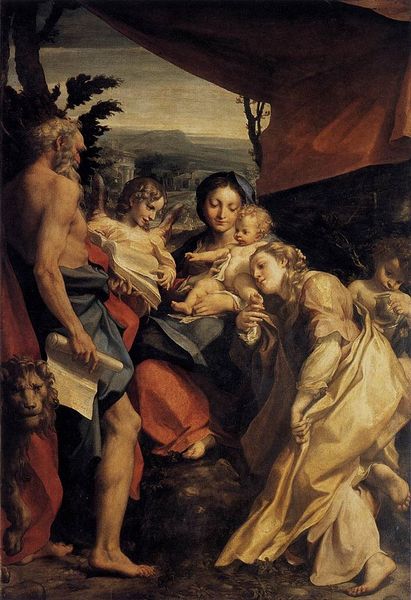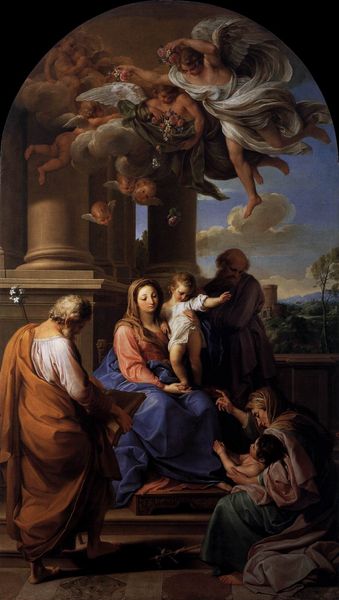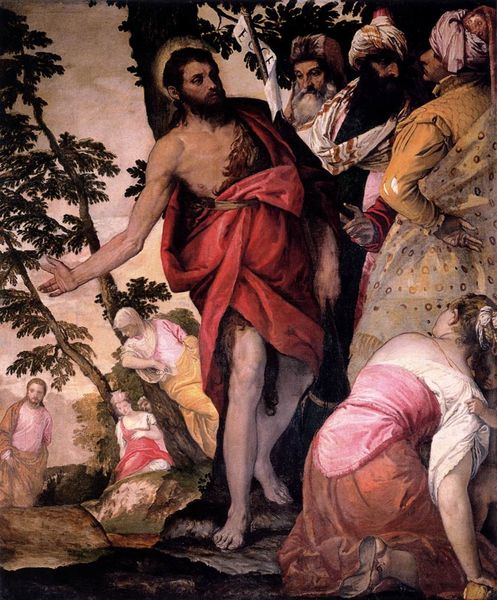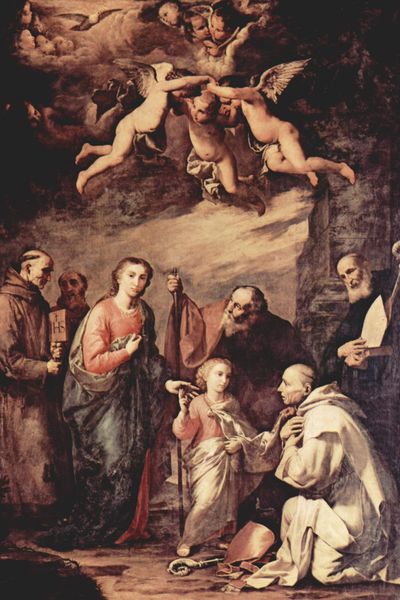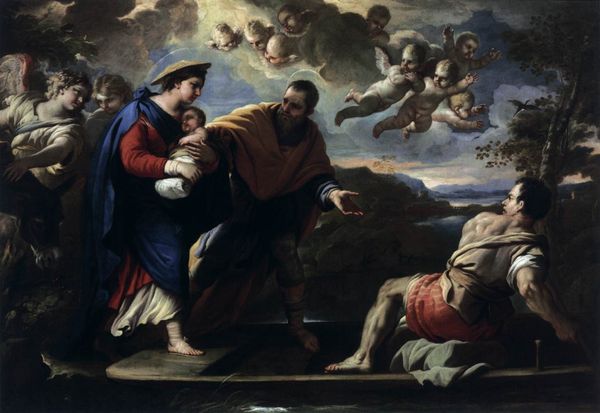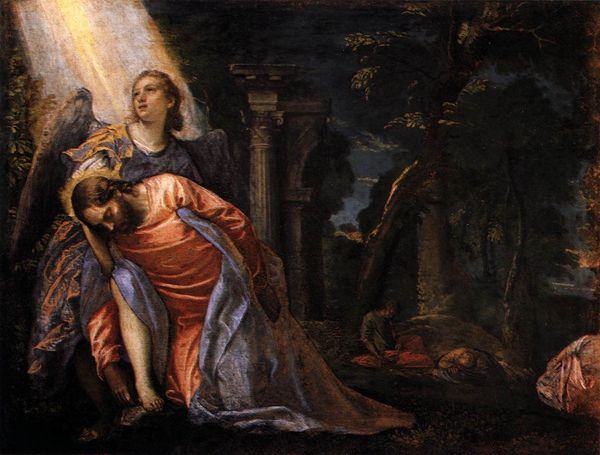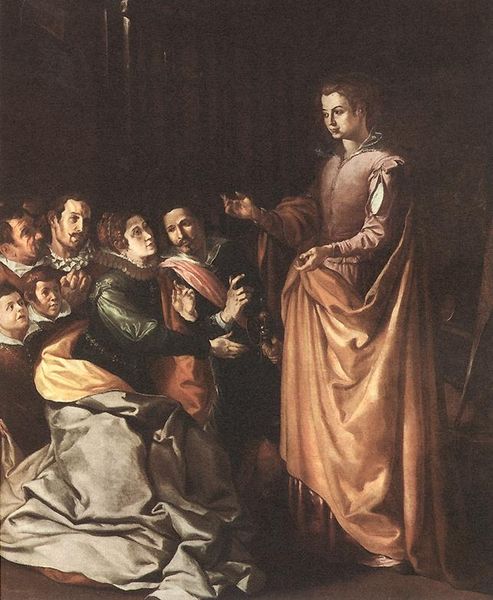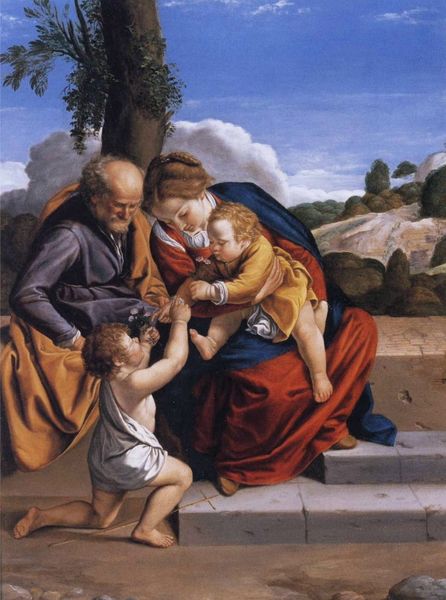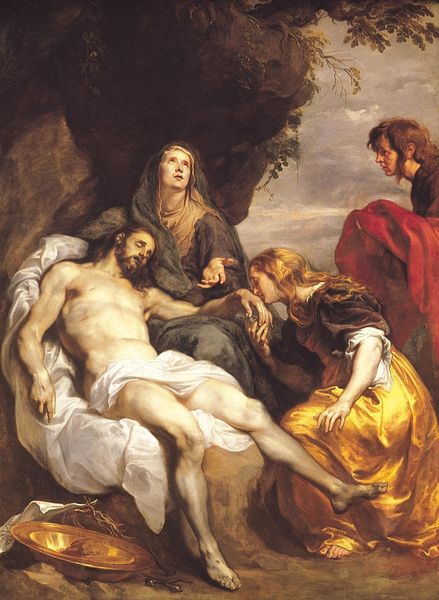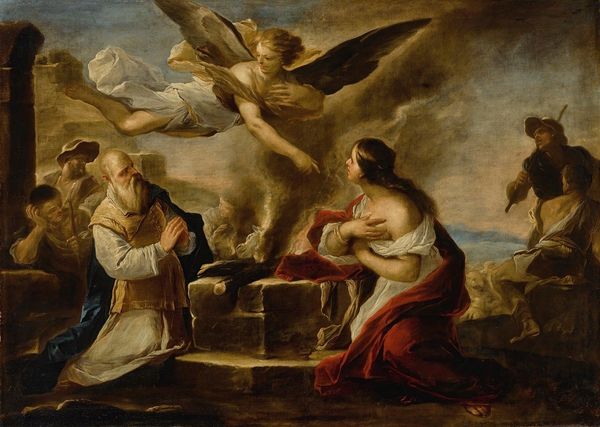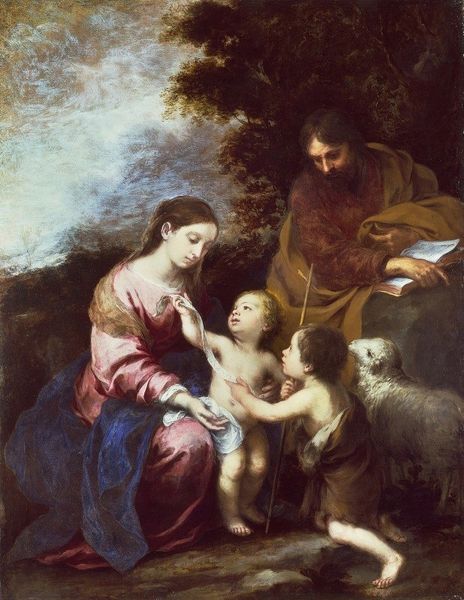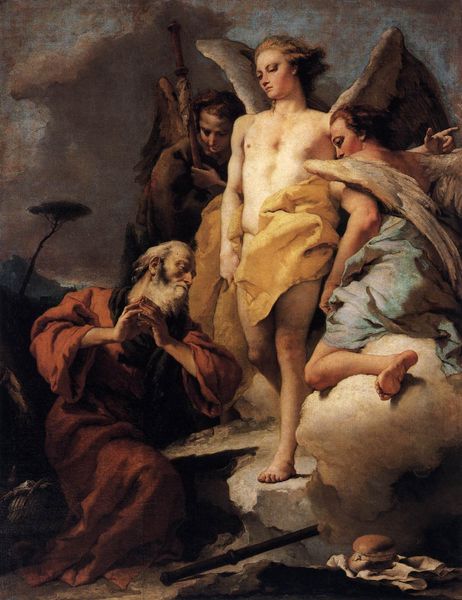
#
portrait
#
character portrait
#
portrait reference
#
male-portraits
#
portrait head and shoulder
#
christianity
#
animal drawing portrait
#
portrait drawing
#
facial portrait
#
portrait art
#
fine art portrait
#
celebrity portrait
#
christ
#
digital portrait
Copyright: Public domain
Curator: Titian's "Holy Family and Donor," painted in 1514, invites us to consider the evolving patronage system in the Renaissance. What are your immediate thoughts? Editor: There's a sense of division in this painting, wouldn't you agree? The right and left side have completely different tonalities and even spatial logic. There's something off-kilter about how the holy family occupies one pictorial plane while the donor is framed by what appears to be an exterior view. Curator: Interesting. Looking at it from a materialist perspective, consider that the donor, likely a wealthy merchant, commissioned this piece. His inclusion is a testament to the growing influence of the merchant class and their desire to be seen alongside sacred figures, negotiating a place within the established social and religious hierarchy. The very pigments used, their cost, and the artist's skill are all commodities that speak to this dynamic. Editor: But it's not just about money; consider the formal arrangement. The division isn't just a matter of planes, but a symbolic dialogue: sacred versus profane, inner versus outer. The warm tones of the domestic scene contrast sharply with the cool blues and greens of the background landscape and the somber colors used for the donor. This dichotomy highlights the very tension between spiritual devotion and worldly affairs. Curator: Absolutely, the use of color is telling. The red and blue in Mary’s garments weren’t chosen arbitrarily but indicate status, in both the artistic creation and its context of consumption. Moreover, notice how Titian portrays Joseph—his strong build and humble attire suggest physical labor, a stark contrast to the refined features of Mary and the infant Jesus. Here, we witness not just religious reverence but also the subtle stratification of labor roles and the glorification of those roles in pictorial language. Editor: I see your point about labor and the painting being an "artistic commodity," but I am not completely sold on that take. Don't you think that, first and foremost, Titian intended for us to be affected? And don't you think we are invited to find in the painting beauty and depth in its allegorical structure and painterly surface? For example, the gaze of Mary, who appears contemplative and aloof? Curator: Yes, the artistry is undeniable. But appreciating it fully requires recognizing how deeply entwined Titian was with the political economy of his time. "Holy Family and Donor" embodies a fascinating intersection of faith, wealth, and the artistic labor that bridged these worlds. Editor: Well, whichever the intersection is, this painting reminds me once again of the enduring power of formal beauty, and it confirms my appreciation of Titian’s talent in orchestrating the elements of this painting in perfect harmony. Curator: Indeed. It offers a powerful look into how the language of painting reflected and shaped social realities.
Comments
No comments
Be the first to comment and join the conversation on the ultimate creative platform.
